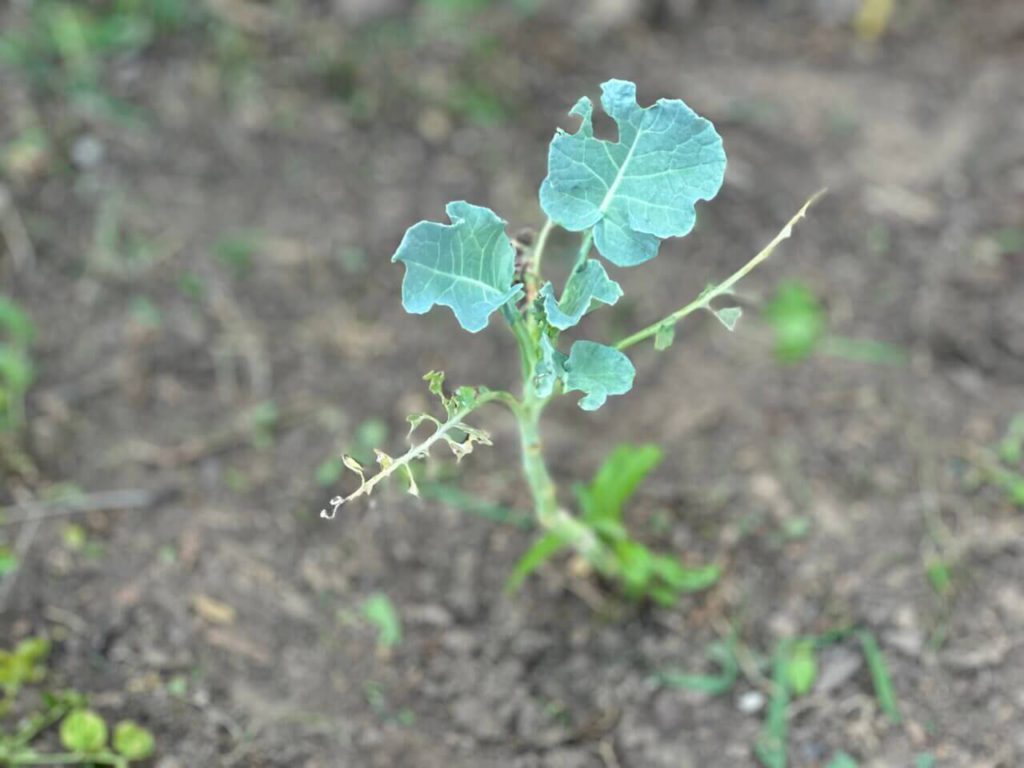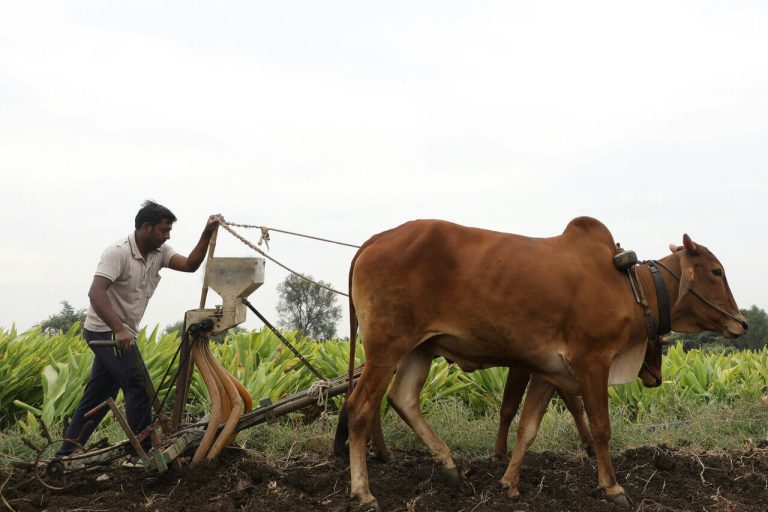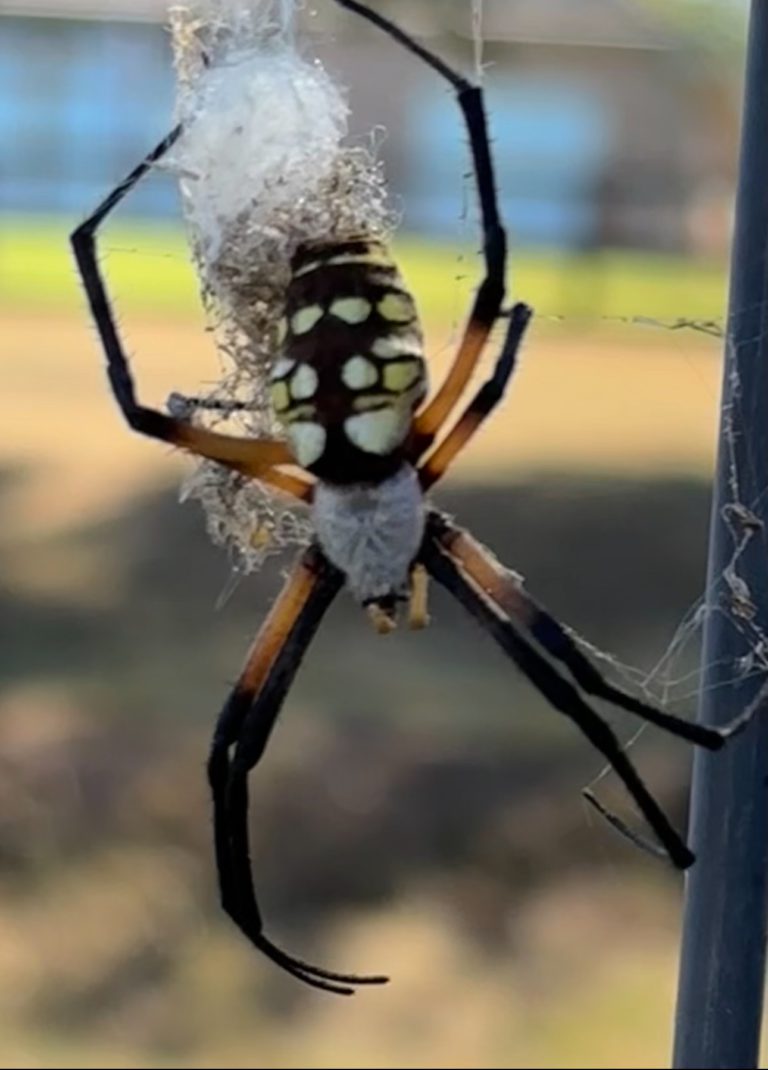How A Grasshopper Deterrent Will Save a Garden

Grasshoppers can cause a lot of trouble for your crops and flowers. Use Integrated Pest Management (IPM) as an effective grasshopper deterrent.
According to Colorado State Extension, “grasshoppers are the most difficult insect to control because they are highly mobile.”
Grasshoppers belong to the Orthoptera order of insects, which comes from Ancient Greek, and means “straight wings.” This order also includes locusts and crickets with more than 10,000 species.
Of these, fewer than a handful tend to be the most damaging to crops. Particularly destructive are the Redlegged grasshopper (Melanoplus femurrubrum), the Differential grasshopper (Melanoplus differentialis), the Twostriped grasshopper (Melanoplus bivittatus), and the Migratory grasshopper (Melanoplus sanguinipes).
Damage from grasshoppers appears in the form of chewed leaves and flowers, which sometimes defoliates or worse, kills plants. They particularly love veggies such as lettuce, carrots, beans, sweet corn, and onions. However, during outbreaks, they’ll eat most plants, including twigs and stems of woody plants.
Grasshoppers, like deer, particularly enjoy vegetable gardens with their abundant food supply and optimal moisture levels.
Grasshopper Deterrent Involves Understanding their Life Cycle
Understanding the grasshopper life cycle helps in controlling them. Then, following best practices, you can break their life cycle to decrease the number of nymphs that become adults.
Grasshoppers begin as eggs. Most species lay pods, with 8-30 eggs, underground in late summer or early fall. These pods are highly resistant to moisture and cold as long as the soil remains undisturbed.
Females prefer to lay eggs in dry soil along roadsides, pasturelands, and native prairies and rarely lay them in irrigated lawns or gardens. If eggs are placed in a yard, expect to find them in areas with dry soil or even within sidewalk cracks.
Most grasshoppers overwinter as eggs, with some as nymphs or adults.
Most eggs hatch in the spring, late May to June, and become ‘nymphs’. Nymphs take 2-3 months to grow through various stages and are then considered adults. This means you’ll see the adults beginning in August, and they’ll remain until killed by a heavy frost.
In late fall to early winter, the adults lay eggs and begin the cycle again
Preferred Grasshopper Habitat
Unlike humans who are endothermic and generate heat internally through metabolic processes to maintain a stable body temperature, grasshoppers are ectothermic. This means they can’t internally regulate their body temperatures and rely instead on the external environment for heat exchange.
When provided with open sunny locations to warm up, grasshoppers can feed, reproduce, avoid predators, and grow quickly. Droughts compound these conditions and lead to grasshopper outbreaks.
Particularly cool and wet spring weather during egg hatching times helps control grasshopper populations naturally. Grasshopper nymphs are most susceptible during the first few days and are more likely to die if the weather is adverse or if there’s not a sufficient food source.
Grasshoppers are more prevalent in rural areas because they provide favorable habitats such as pastures and rangeland. They move into our yards in summer as their preferred native vegetation dries or is defoliated. Like voracious teenagers, grasshoppers at this stage will eat most plants, even those they don’t prefer.
Once adults, grasshoppers cause the most damage and are the hardest to control. They’re bigger, eat more, and have wings that allow them to travel great distances from one area to another very quickly.
Grasshopper Control Methods
First Line of Defense
A weather pattern that produces cold and wet weather during egg-hatching periods is the best grasshopper deterrent. Since we have no control over the weather, most home gardeners rely on mechanical and treatment methods.
As a gardener, you can lightly turn the soil. This can be done in spring to break up egg pods before nymphs hatch, and again in mid to late summer, if a garden is empty, to discourage females from laying eggs.
Sow seeds early in spring to allow for plants to become more established and better able to survive grasshopper damage.
Another natural method relies on other insects and animals. The larvae of blister beetles prey exclusively on grasshopper egg pods. Adult robber flies are predators of grasshoppers during summer, and still other flies develop as internal parasites in grasshoppers. Several bird species, including horned larks and kestrels, feed on grasshoppers, while animals such as coyotes will also eat them.
Certain fungal diseases, nematodes, and microspores act as a grasshopper deterrent in the nymph stage. Commercially available forms are available but need to be applied to the breeding areas outside your garden before the migrations occur. Some are also perishable and must be refrigerated before use or expiration.
Common treatment areas include open fields, roadsides, boundaries between yards, open spaces, ditches, drainage, hedgerows, or other weedy areas.
Last Resort Defense
As a last resort, insecticidal treatments may be warranted. Chemical use should be avoided if at all possible as they kill beneficial insects and pollinators too. If chemicals are used, follow all manufacturers’ recommendations and use them responsibly. Also, understand that few insecticides allow direct application to garden fruit and vegetables.
Bait combined with insecticides (wheat bran and carbaryl or Nosema locustae) is aimed at the developing stages and needs to be applied at sites where egg-laying occurs. Nymphs are attracted to the bait and die when they also ingest the insecticide. This method is most effective when developed and implemented as a neighborhood / community-wide program. It’s effective, easy to apply, and expensive. Reapplication is necessary following rain and watering.
Dust (carbaryl) is also effective and expensive. It doesn’t readily adhere to foliage and must be reapplied frequently.
Sprays (malathion, carbaryl, permethrin, bifenthrin) are less expensive than bait and dust but require spray equipment to apply. They kill grasshoppers on contact or when they eat the foliage.
Grasshoppers can be a real challenge for gardeners. When you understand their life cycle you can begin to use a mix of natural and mechanical methods to decrease their numbers.
Remember that you can plant early, encourage natural predators, and use treatments carefully to protect your garden from these destructive pests.
Follow Master Gardener, Kim Nelson, on Medium.com to learn more about best practices and research-based gardening.







One Comment
Comments are closed.